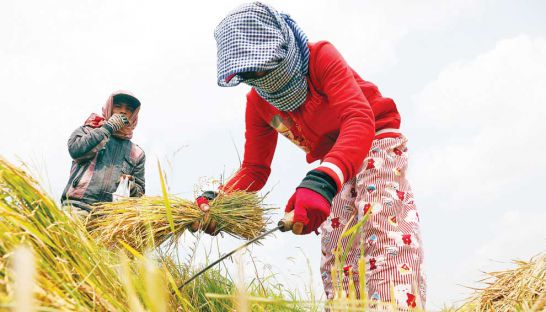Millers start to make use of $50M emergency rice fund
Millers start to make use of $50M emergency rice fund
The government has already provided $9 million from its emergency rice loan fund to the Kingdom’s rice millers since the harvest season began in September, nearly triple the amount it provided when it first launched the initiative last year when millers showed little appetite for state financing.

Kao Thach, CEO of the state-owned Rural Development Bank (RDB), said yesterday that the government had officially signed off on $9 million worth of loans out of a fund which has reserved $50 million in total an amount the government believes is sufficient to prop up the struggling rice sector.
“We already have given out $9 million to the rice millers and we expect that more millers will come apply for funding,” he said, adding that the RDB provides lower interest rates compared to commercial loans.
With an annual interest rate on loans set at 5 percent, the government beefed up the emergency package in early August after millers decried that they lacked the cash reserves to purchase unprocessed paddy from farmers and that this shortage of capital would destabilise prices.
While the emergency fund in 2016 only managed to lend $3.5 million despite the rice sector facing two consecutive years of drought and a vocal industry body claiming an imminent collapse, Vice President of the Cambodia Rice Federation Hun Lak admitted millers were better prepared this year to meet the state’s loan requirements.
“Our paddy rice market this year is good and stable and most of the millers have a better understanding about the loans and the application requirements and have better managed their own capital,” he said.
In addition to the emergency fund, the RDB has already provided a $30 million package to three select millers to construct rice storage and drying facilities in Kampong Thom, Prey Vang, Takeo and Battambang provinces which are set to be completed in the coming months.
Lak said that the construction of rice storage facilities was a much needed boost for millers who struggle to purchase rice from farmers as stockpiles stack up.
“There is a lot of relief in the sector this year for both farmers and millers, because when we lacked storage facilities we also lacked funds for purchasing paddy rice,” he said.
However, he was still sceptical if the loan would be sufficient, especially if overseas orders dramatically increase.
Song Saran, CEO of Amru Rice, who received $1.5 million from the RDB by using approximately 5,000 tonnes of rice as collateral, said the government should expand the programme beyond its current limitations which as yet only allow fragrant rice to be used as collateral.
“The RDB has a good strategy to ensure the prices for paddy rice, but it would be better if the government approved loans for all types of rice varieties to promote exports,” he said.














